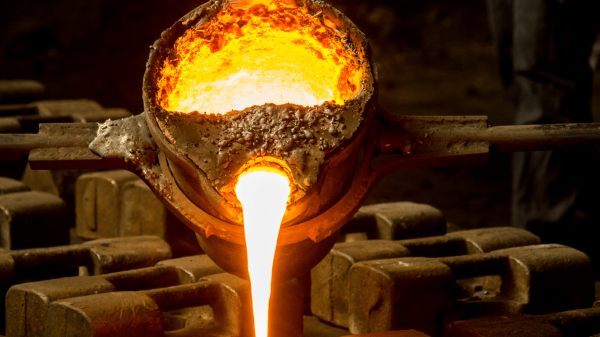The manufacturing method known as investment castings, which is often referred to as lost-wax castings, involves coating a wax design with a ceramic shell that then solidifies into a mold after it has been applied. A hollow in the form of the desired component is left behind when the wax is melted and removed from this mold, which is then heated to melt it. A precise and delicate end product is created by pouring molten metal into the cavity, which fills the cavity and creates the final product. They are noted for their high precision, detailed features, and smooth surface finish, which makes investment castings perfect for creating complicated components with tight tolerances. Investment castings are also known for their flawless surface finish. This method is often used in sectors such as the aerospace industry, the automobile industry, and the medical industry, all of which place a premium on accuracy and quality.
Sand casting is an example of a manufacturing process that is comparable to investment casting, which is also known as lost wax casting. Investment casting is a precision metal casting method because it is capable of producing castings that are highly accurate and finely detailed.
History of Investment Castings for Engineering
Casting is a procedure that has been used by several ancient civilizations to create intricate works of art in bronze, gold, and copper. The history of the casting process is strewn throughout many different ancient civilizations. Artistic practitioners from Mesopotamia and ancient Egypt, as well as those from the Benin culture of Africa and the Han Dynasty of China, all used the procedure in order to produce sculptures and other forms of artistic expression.
The oldest known instances of investment casting date back to around 4500-4000 BC. Artifacts discovered in Mesopotamia and Egypt showcase elaborate metal castings manufactured using the lost-wax process. These types of castings were made utilizing investment casting. The elaborate jewelry, sacred relics, and ornamental things that these early civilizations created were all made by the process of investment casting. Investment casting also provided other advantages, such as a quicker production rate, particularly in the case of firearms and airplanes, a reduction in the amount of secondary processing, and the creation of less waste (which is perfect for the more rare and costly metals).
At the present day, investment castings for engineering maintains to play an important position in the engineering and manufacturing industries. It offers a technology that is both cost-effective and adaptable for the production of intricate components.
There are several benefits to investment casting such as:
- It is quite versatile since it allows you to mix a number of different wax patterns into a single mold that is completely unique. It is also feasible to produce components that would be difficult to manufacture with a machine or tools, which makes it a potential alternative to elements.
- In order to achieve an extraordinary surface polish, it pays close attention to detail and to make use of items of superior quality. Utilizing a single mold, this method is ideal for the creation of intricate geometric shapes that are very small and possess a great deal of detail. The materials that are utilized are often reusable, such as melting wax, which may be used again in a different design. It is possible to reuse the mold on occasion! In addition to this, it provides a wide variety of design options; design engineers have the ability to include distinguishing markers into the casting, such as numbers, logos, and product registration numbers.
- Here the term “high dimensional precision” refers to the capability of properly measuring and manipulating either data or objects in several dimensions with an extremely high degree of precision. In order to guarantee that measurements are accurate and consistent across several dimensions, it is necessary to have rigorous planning, exact calibration of equipment, and professional understanding of mathematical methods. This is because it provides high dimensional precision without compromising accuracy.
- Through the use of investment castings for engineering many professionals are able to recreate delicate and complicated forms with pinpoint accuracy. Computer-aided design (CAD) software and 3D printing technology allow engineers and foundry specialists to develop sophisticated molds and patterns for casting even the most difficult parts. This is possible because of the combination of these two technologies.
In conclusion, investment castings are a fascinating combination of art and science that play a crucial role in modern engineering.


1 comment
[…] Manufacturers of investment castings for food industry may remain ahead of the curve and impact the future of food processing for many years to come if they embrace the developments and trends that are now occurring in the […]